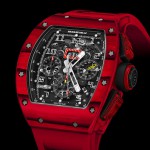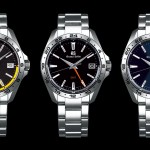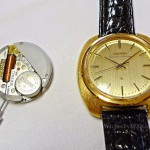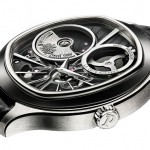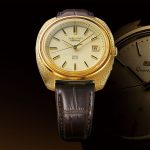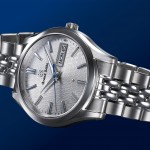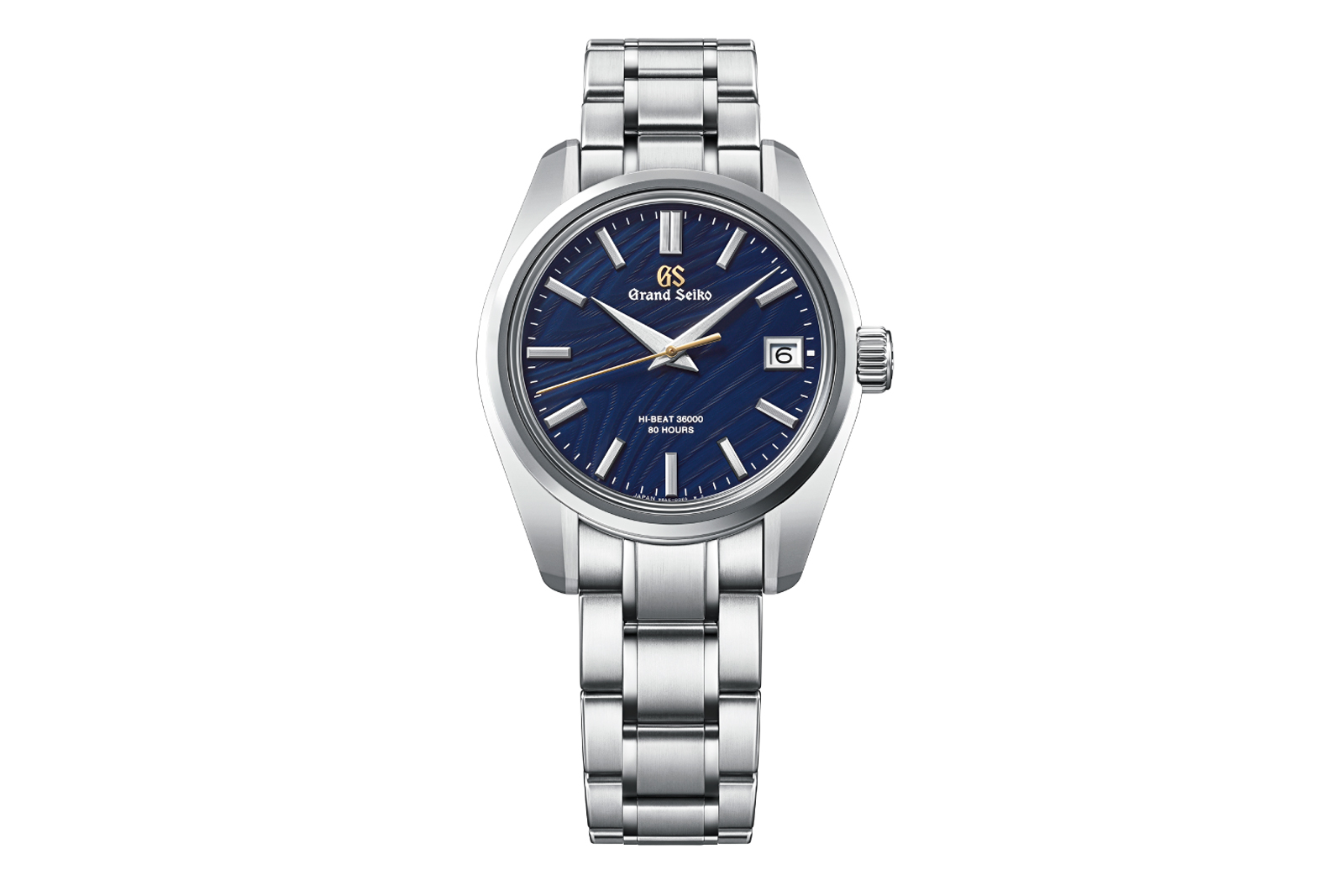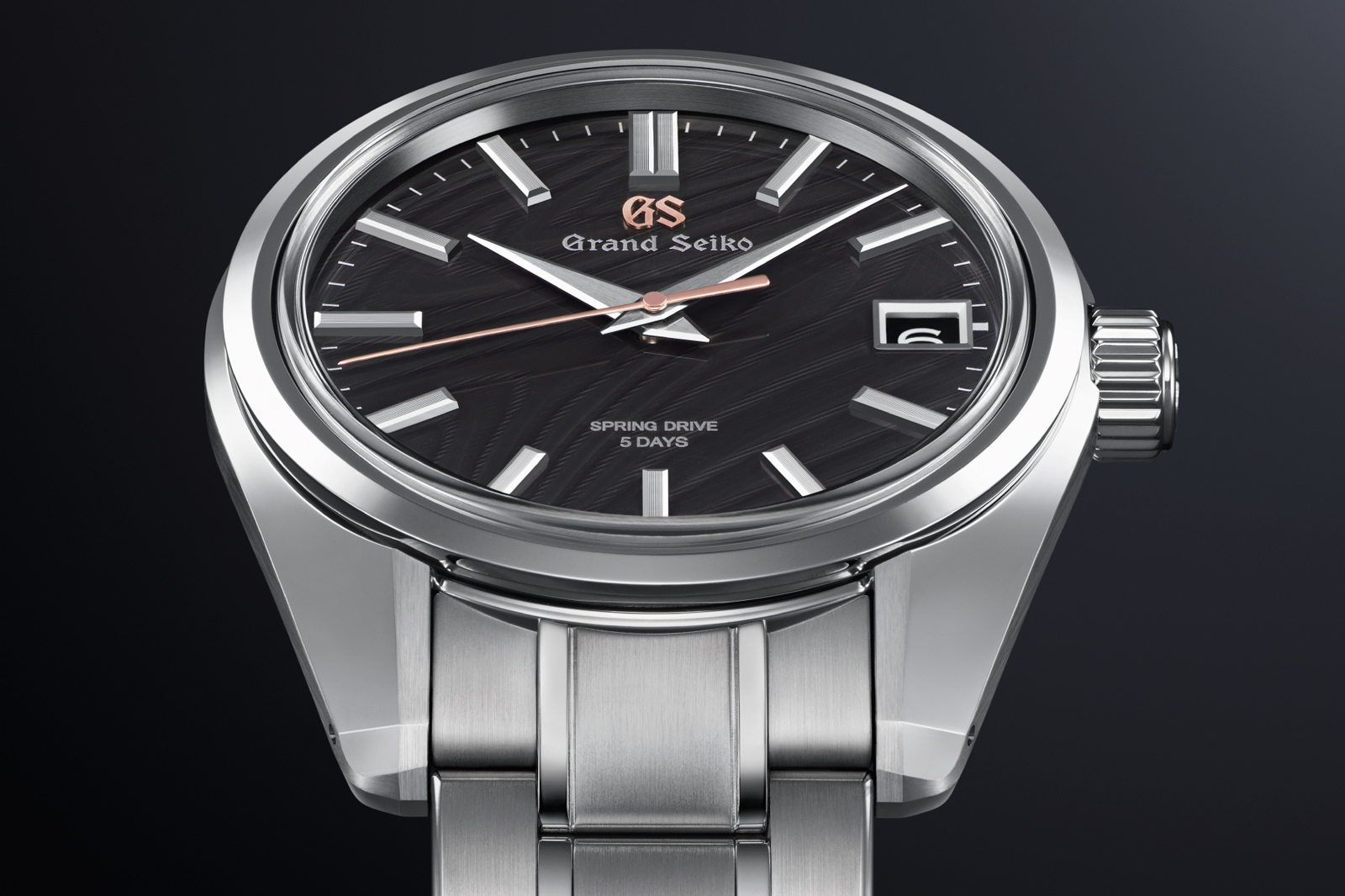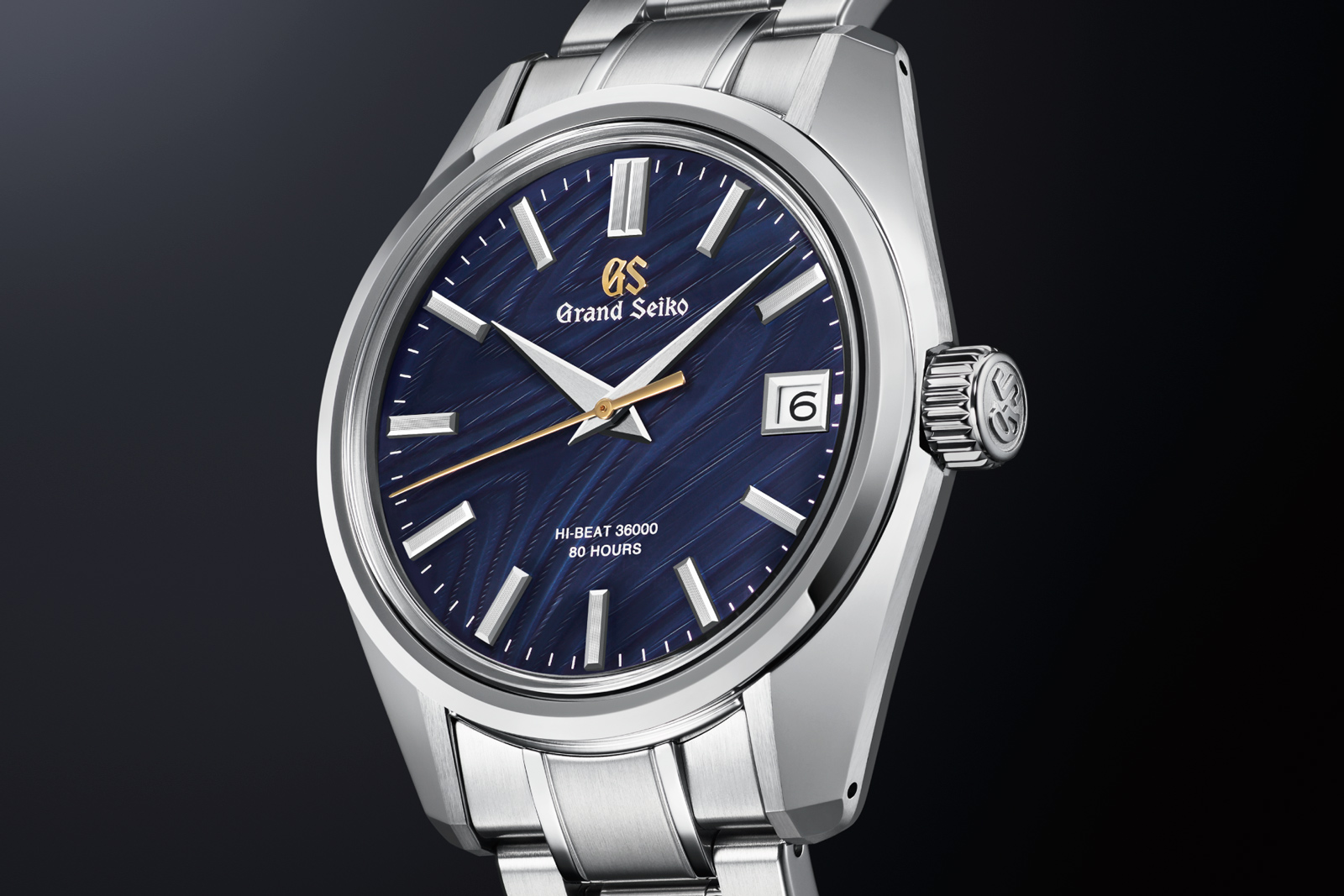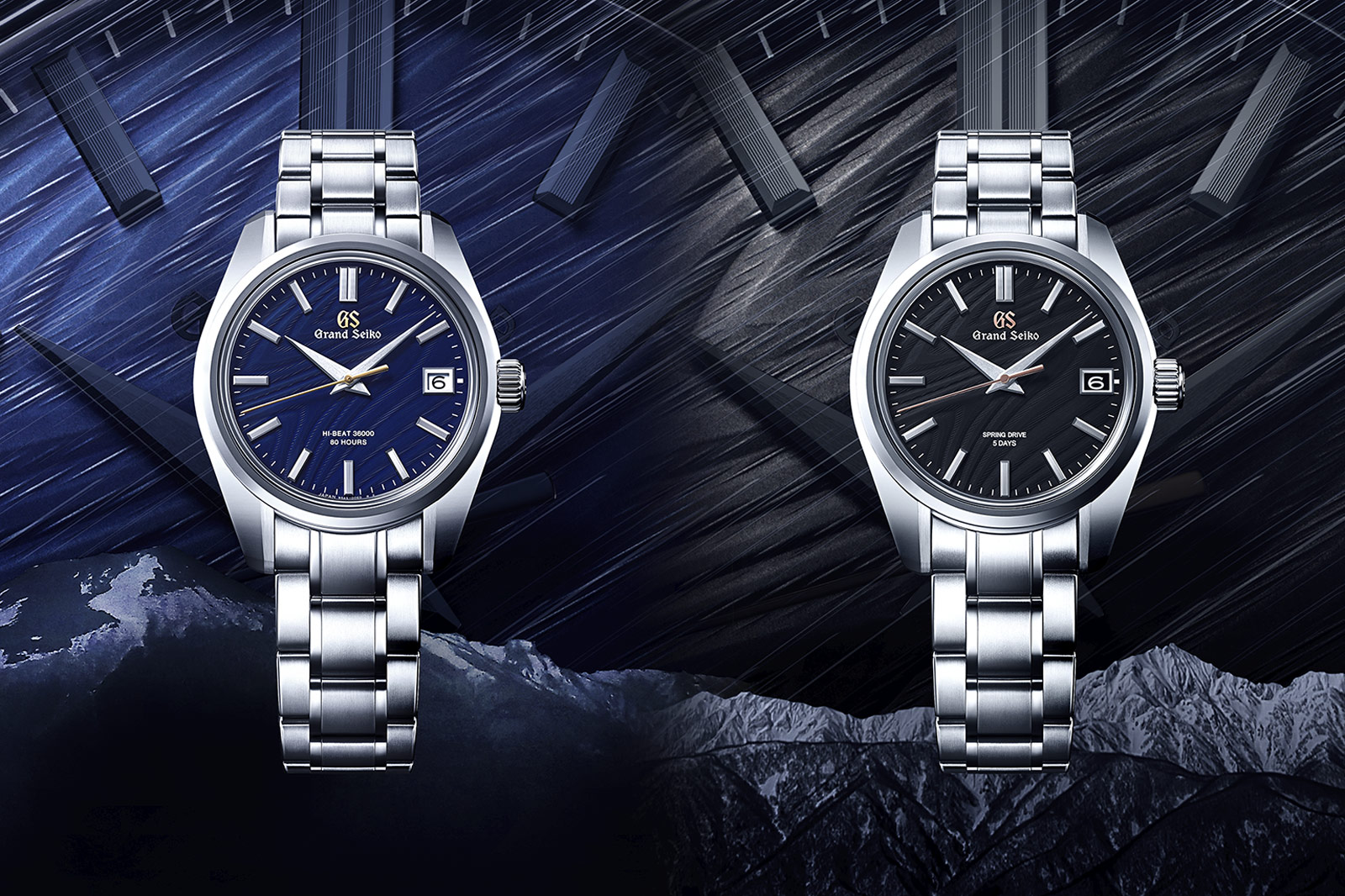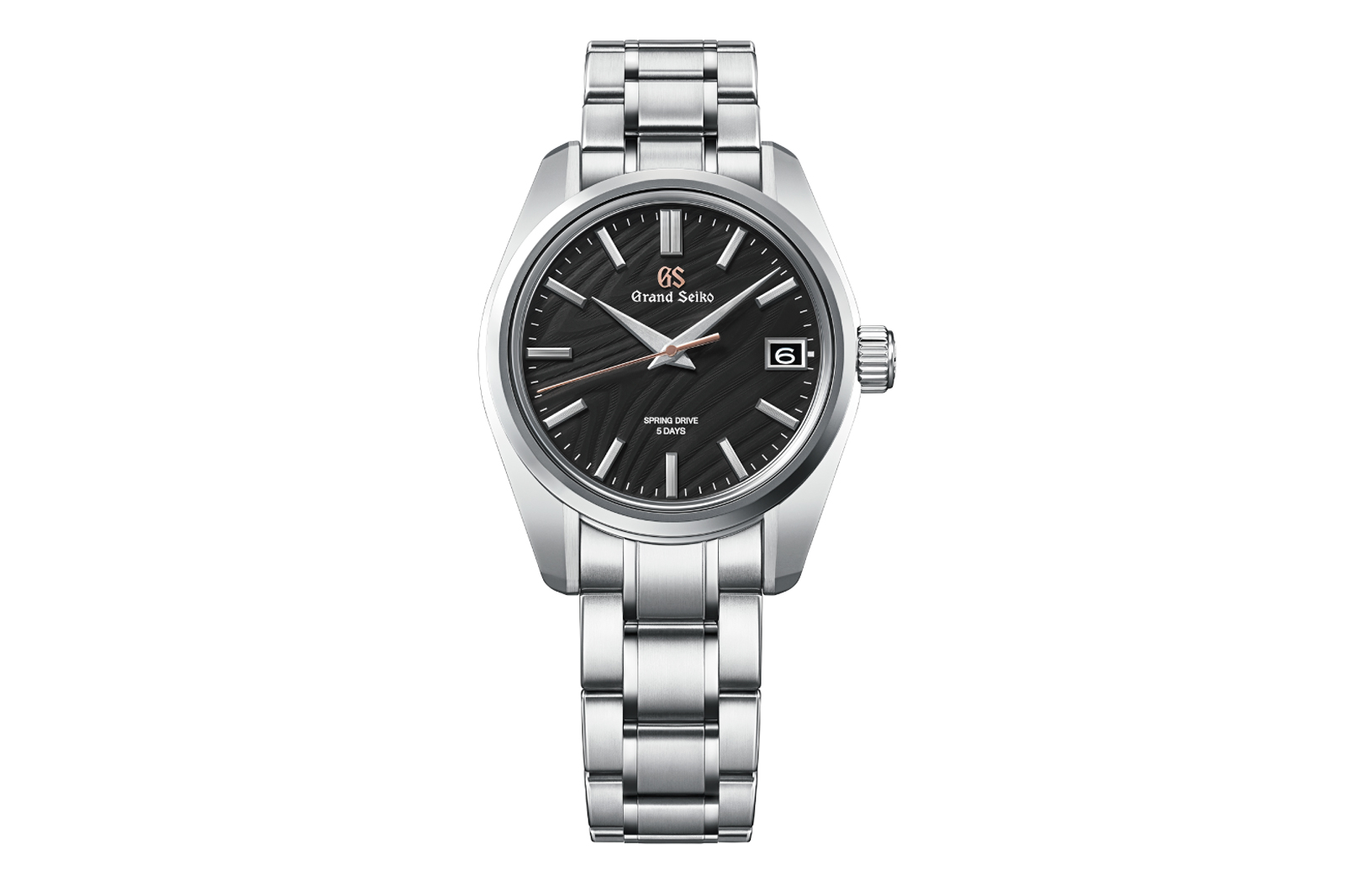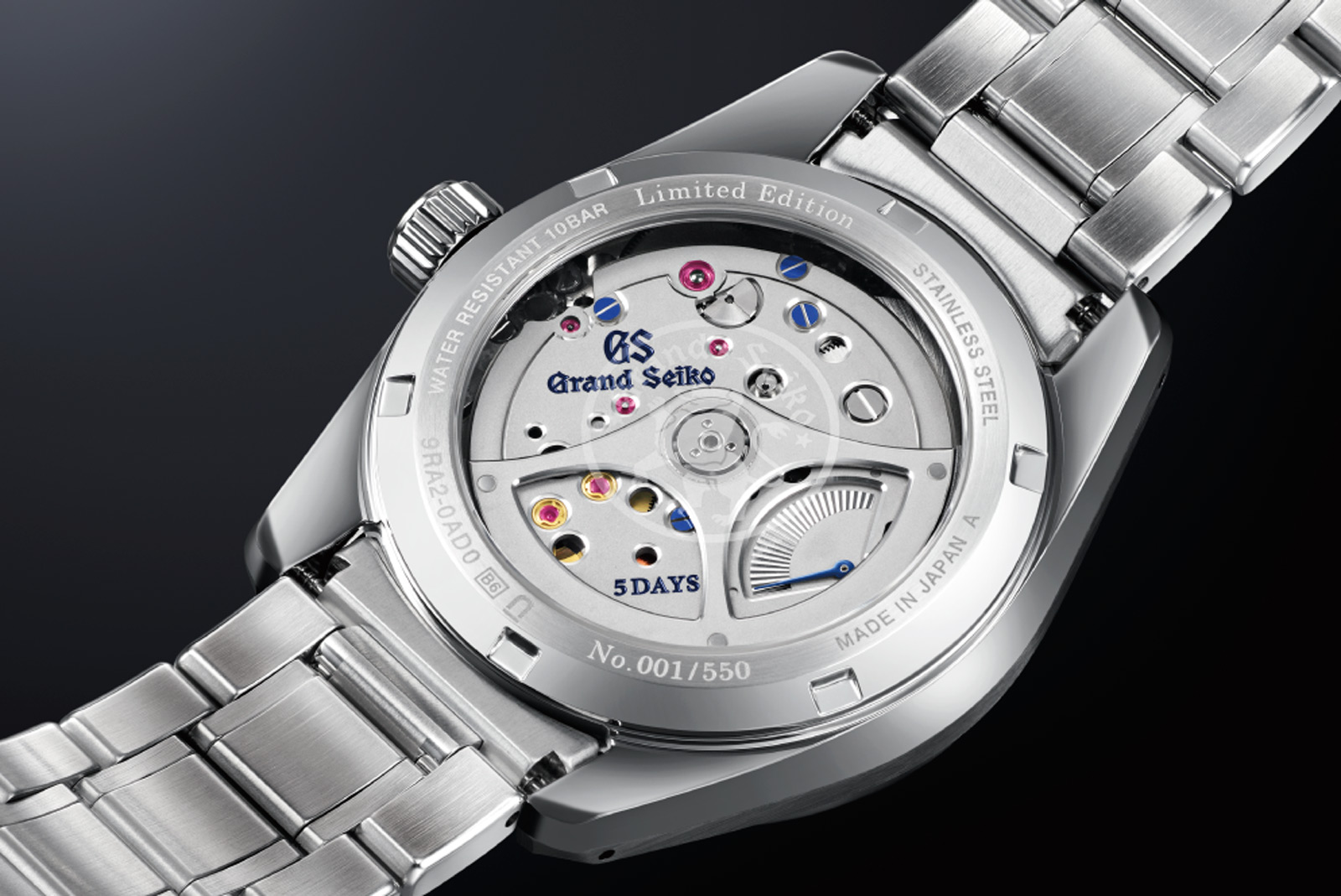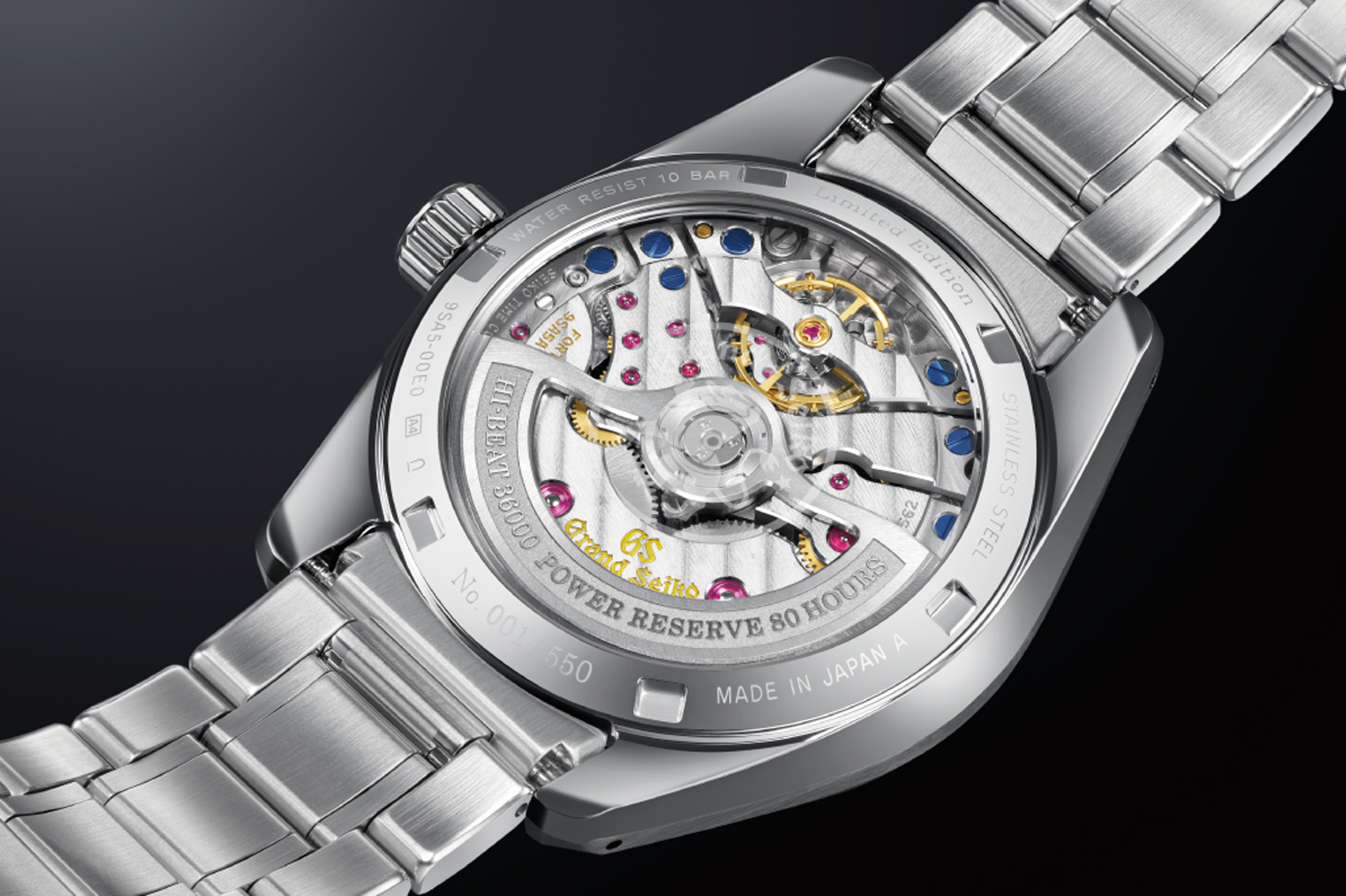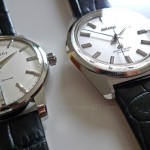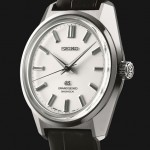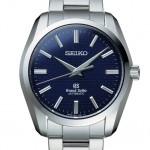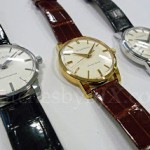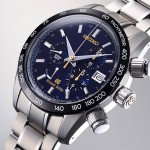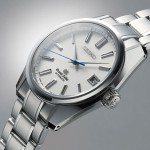In-Depth: An Engineer’s Technical and Personal Perspectives on Quartz Timekeeping
Speaking the unspeakable.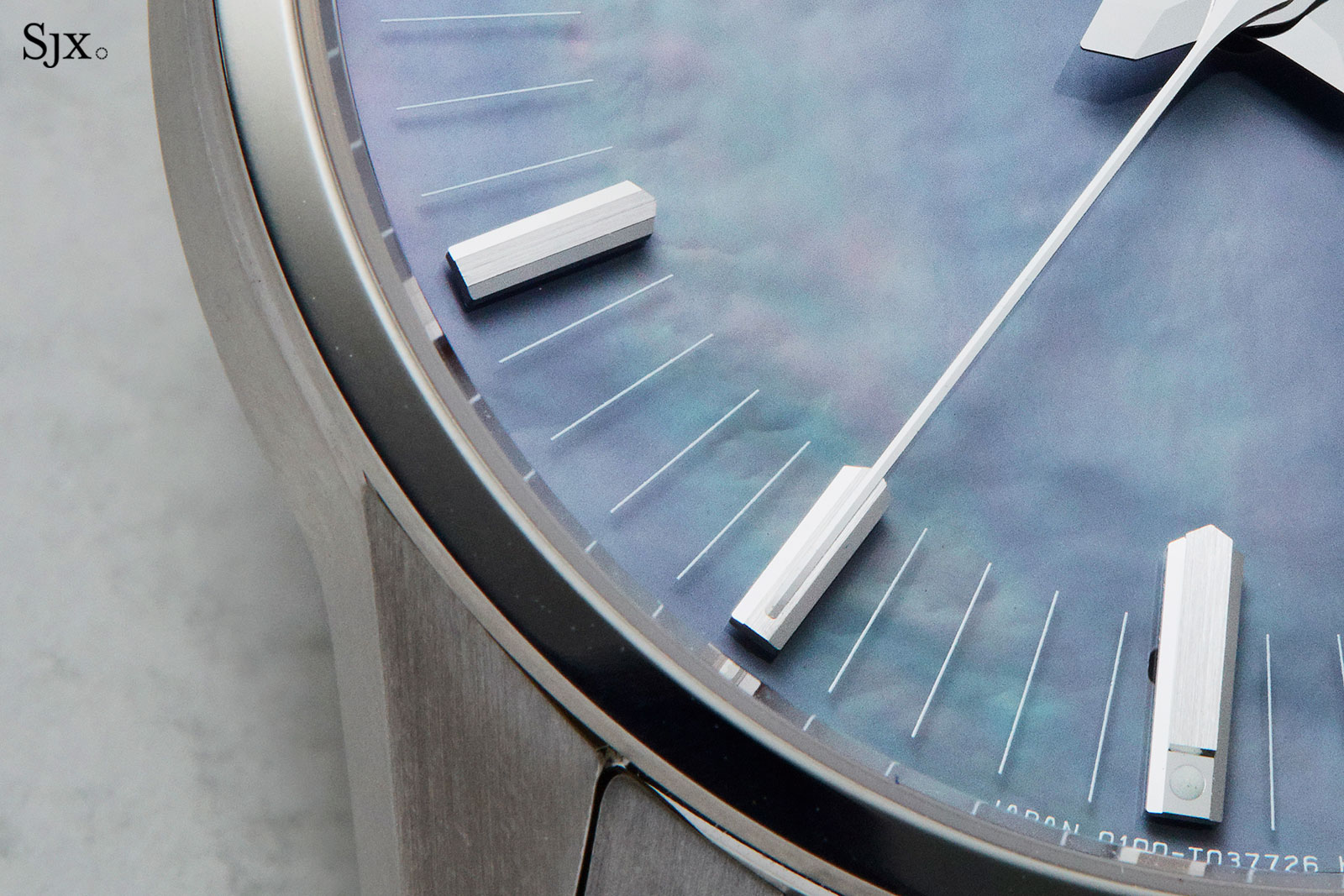
For an uncompromising mechanical watch enthusiast, one of the most dreaded words in the specifications of a watch is surely “quartz”. Oftentimes that dread is followed by the thought, if only it was mechanical…
I must admit this went through my mind when I discovered the lovely Cartier Santos Dumont in 2019. And that was despite Cartier’s best efforts in communicating that the movement inside was a long-autonomy quartz calibre with a six-year battery life.
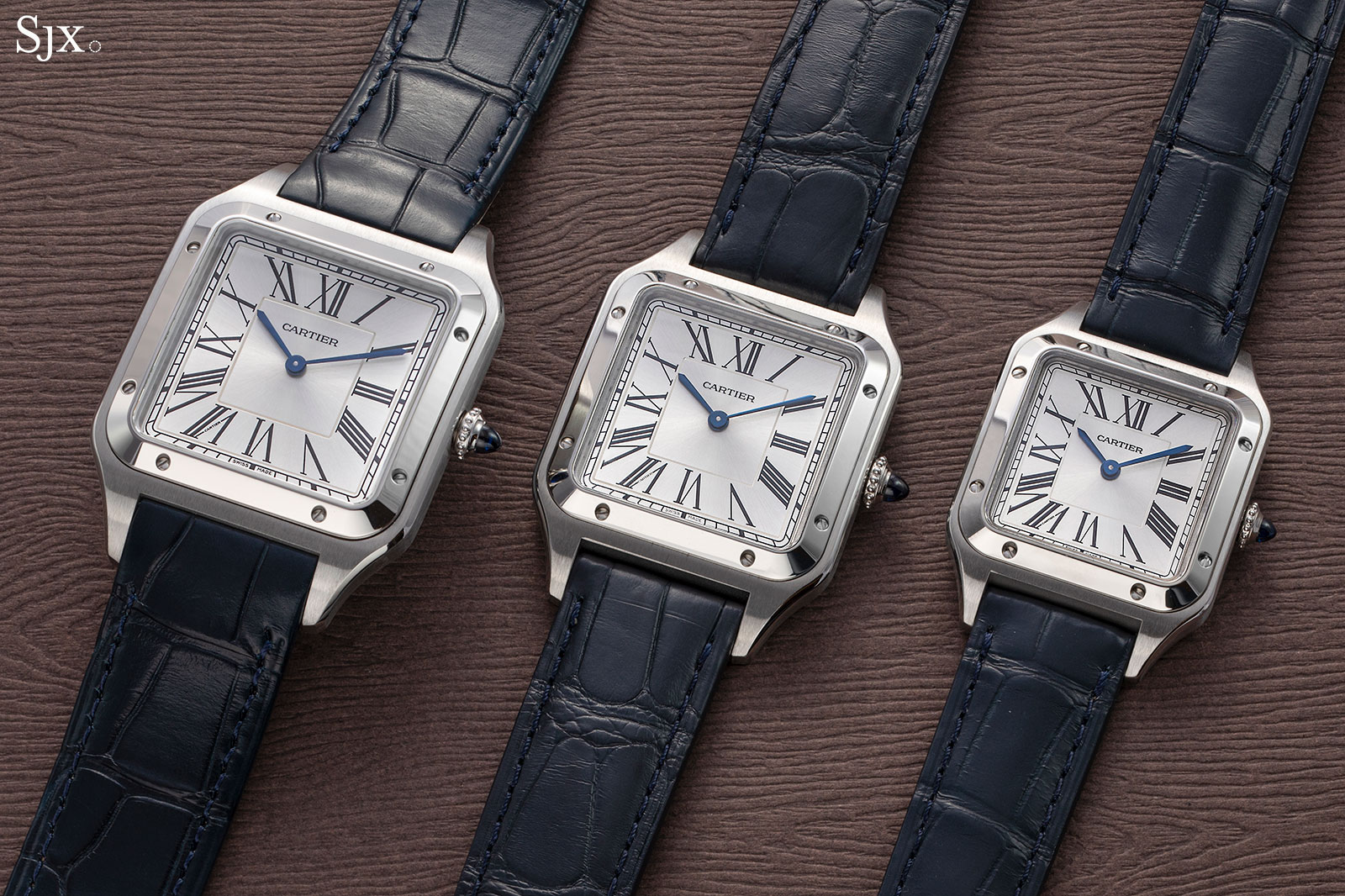
The Cartier Santos Dumont trio, with only the XL variant (extreme left) being mechanical
In the time since, I began to ponder the question: why do I seek the latest electronic gadgets, but am dismissive towards quartz watches? Just because quartz movements are often cheap and easily available, does that leave them uniformly uninteresting?
The Quartz Crisis
On Monday, December 29, 1969, tucked somewhere in the The New York Times was an eight-line paragraph that ended with “[the] world’s first electronic wrist watch with a crystal oscillator.” That electronic watch, as you may have guessed, was the Seiko Quartz-Astron. It was barely obvious at the time, but the announcement, innocuous as it was, would be the harbinger of a crisis for Swiss watchmaking.
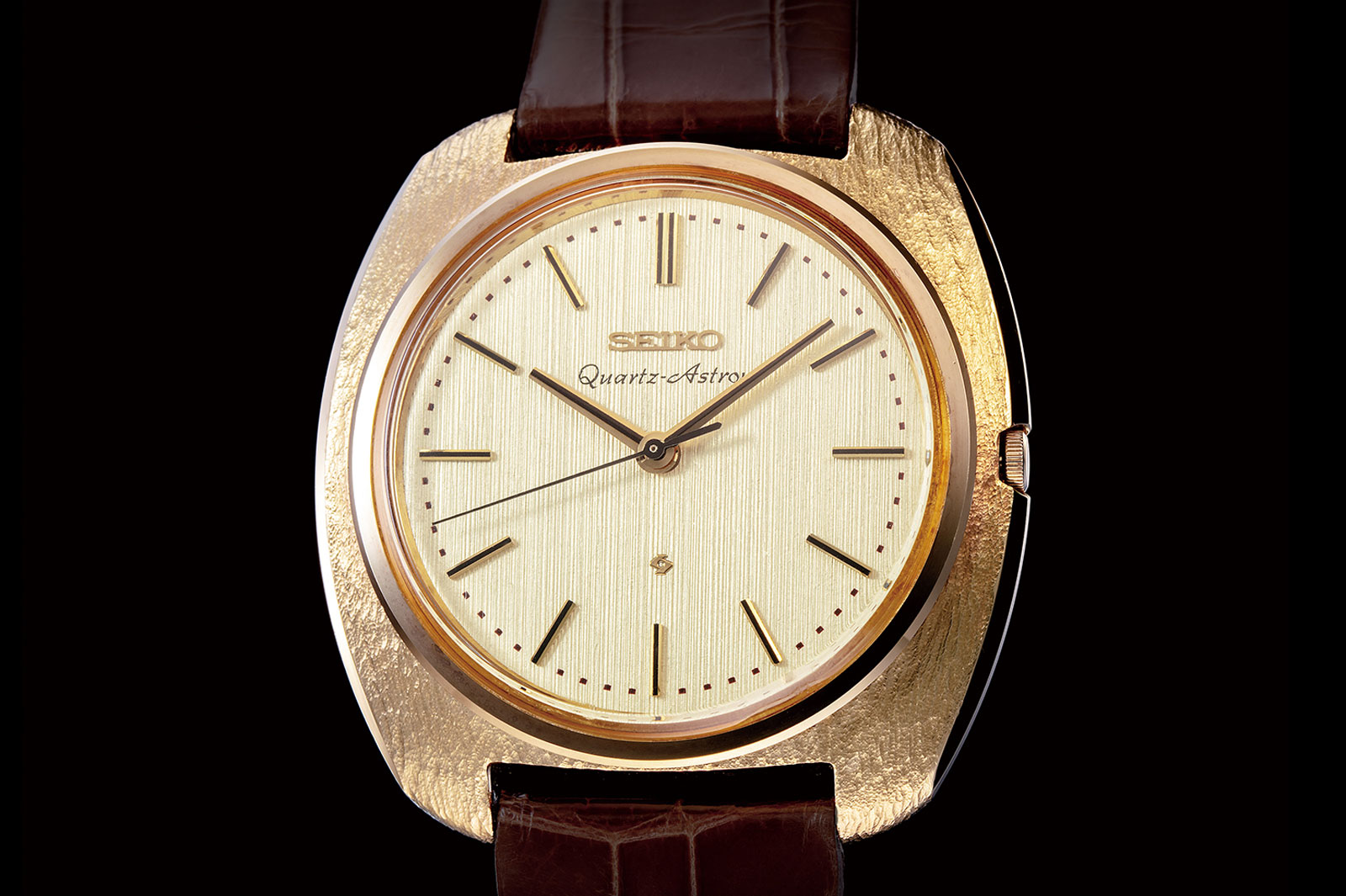
The father of all quartz watches, the Seiko Quartz-Astron 35SQ in 18K yellow gold
The Quartz-Astron cost as much as a Toyota Corolla at the time of of its release – its price was equivalent to about US$1,200 – and was without a doubt a luxury product. Over a decade later, in 1982, Seiko launched a new line of affordable quartz watches, with its American advertising carrying the tagline “The People’s Quartz. It’s Everything Except Expensive.”
Alongside Seiko, American companies such as Texas Instruments began manufacturing affordable quartz movements and over the next few years, the sales of quartz wristwatches skyrocketed. These relatively high-end quartz watches faced low-cost competition from Hong Kong and elsewhere, where lengthy, automated production lines were set up to churn out quartz movements by the millions, working round the clock as though they were running out of time.
Taking place alongside the Quartz Crisis was the digital revolution, which saw the emergence of liquid crystal displays (LCDs) on wristwatches. Casio famously introduced the all-digital G-Shock DW-5000 in 1983, which still remains the pinnacle of the Go-Anywhere-Do-Anything (GADA) category of watches, some 40 years and 100 million watches later.
While the low cost of quartz watches was the primary driver of sales in the 1980s, the advantages of quartz over mechanical were manifold – impact and magnetism resistance, superior timekeeping, additional complications without the corresponding increase in complexity, and the list goes on.
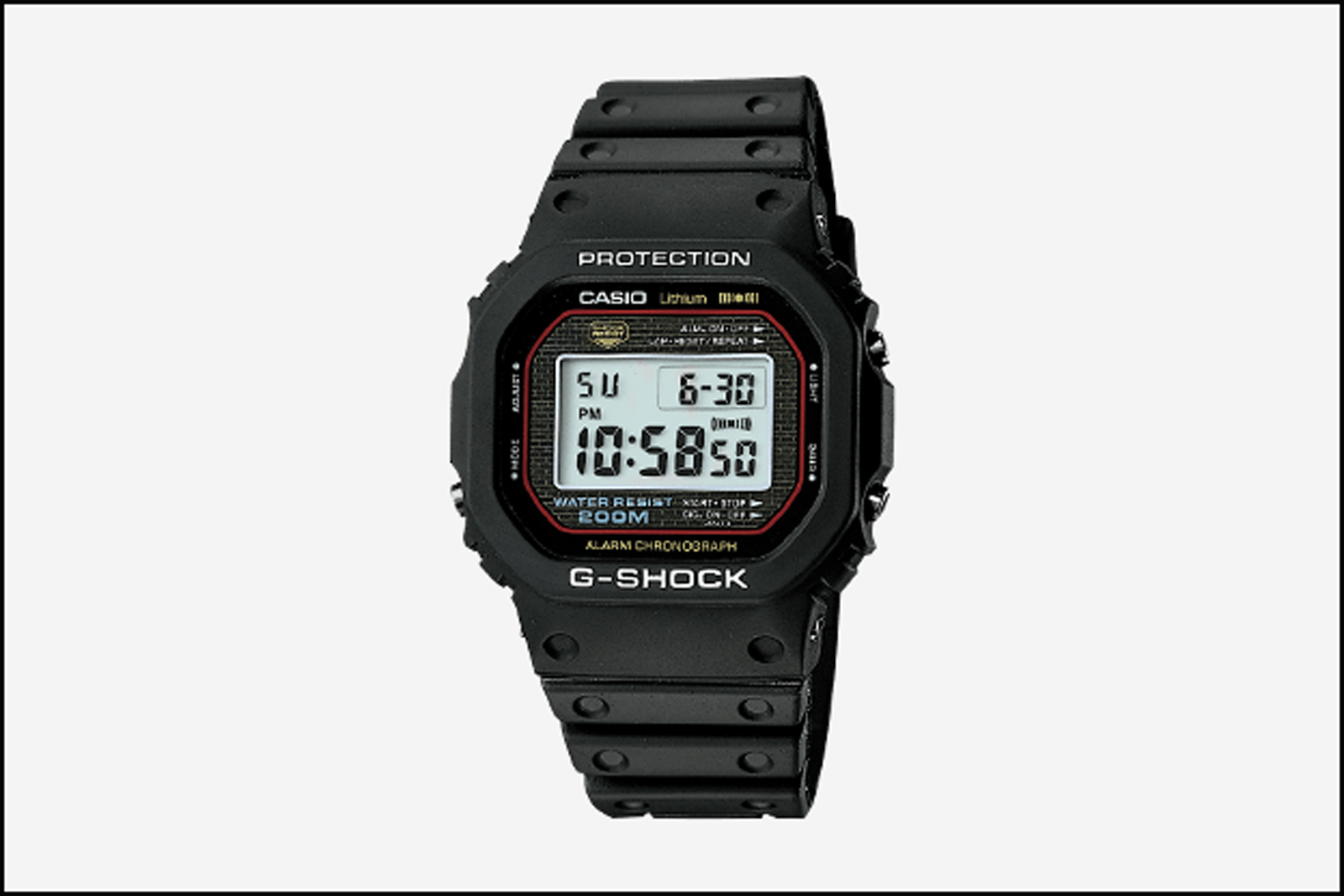
The original G-Shock of 1983
The only drawback of a quartz watch is that the movement may stop without warning once the battery goes flat. An unscheduled trip to the departmental store for a replacement battery is the plan when you are in the car, but reality is that you would most likely end up with another departmental-store quartz watch. Quartz watches are disposable, as we have long been educated by salespeople all over the world.
With this reputation, it is impossible to change the consumer mindset to one where quartz is luxury. Naturally, premium brands like Rolex and Patek Philippe swiftly abandoned the concept of a high-end quartz watch after a brief foray into the field with the Beta 21 quartz movement – Switzerland’s first commercially available quartz movement – and instead doubled down on mechanical watchmaking. However, Japanese watchmakers like Seiko and Citizen remained resolutely committed to quartz watches, created a niche for themselves that few Swiss watchmakers wanted to compete in.
Beyond the philosophical difficulty of accepting a quartz movement as high-end, the technology is accompanied by a dead giveaway – the jumping (or deadbeat) seconds hand. While I have extolled the technical and philosophical perfection of having a deadbeat seconds in a mechanical watch, the ticking seconds of quartz movement is a horological afterthought – devised to minimise energy consumption and maximise battery life.
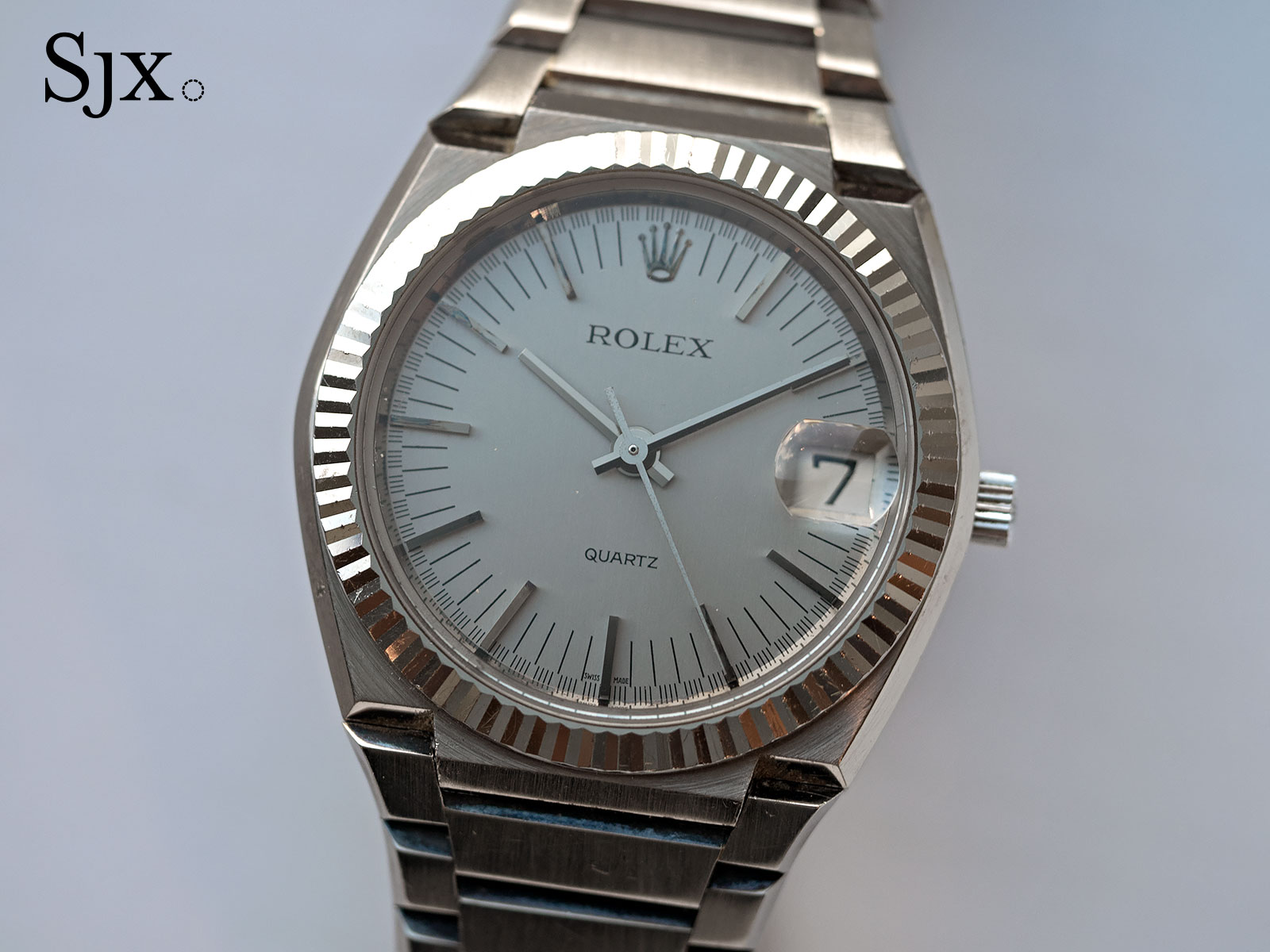
The Rolex Beta 21 ref. 5100 “Texano” – only 1,000 were made, the majority in yellow gold, with the white gold example pictured being exceedingly rare
Wait a second, what is quartz?
The story of quartz timekeeping began in 1880 with French brothers Paul-Jacques and Pierre Curie – the latter was Marie Curie’s husband – when they discovered the piezoelectric effect. For my learned friends who are proficient in Greek, piezoelectricity is self-descriptive, the very word is as direct a translation as possible of the effect.
For the rest of us, piezo means “to squeeze”, and piezoelectricity thus refers to an electric charge created due to squeezing, or mechanical stress in other words. And the laws of physics allow for a reciprocal phenomenon – the converse piezoelectricity effect – where a voltage can be applied to deform a piezoelectric material.
The piezoelectric effect is why a battery resides in a quartz movement: it is the source of voltage that causes the deformation of the quartz crystal. With the quartz crystal shaped like a tuning fork, its deformation and subsequent relaxation creates vibrations with a natural frequency that are a function of the length of the arms, like any other tuning fork.
Most quartz movements have a natural frequency of 32,768 Hz, which is about four orders of magnitude (or approximately 10,000 times) faster than the beloved balance wheel of a lever escapement. The vibration of the quartz crystal in turn generates a voltage via the piezoelectric effect, which is transmitted to an integrated circuit. The circuit then counts the number of oscillations.
When the preordained number of oscillations (for example, 32,768) is reached, the circuit records one second as having elapsed. Naturally, that results in two questions. Why is the natural frequency 32,768 Hz? And how are the constant vibrations maintained?
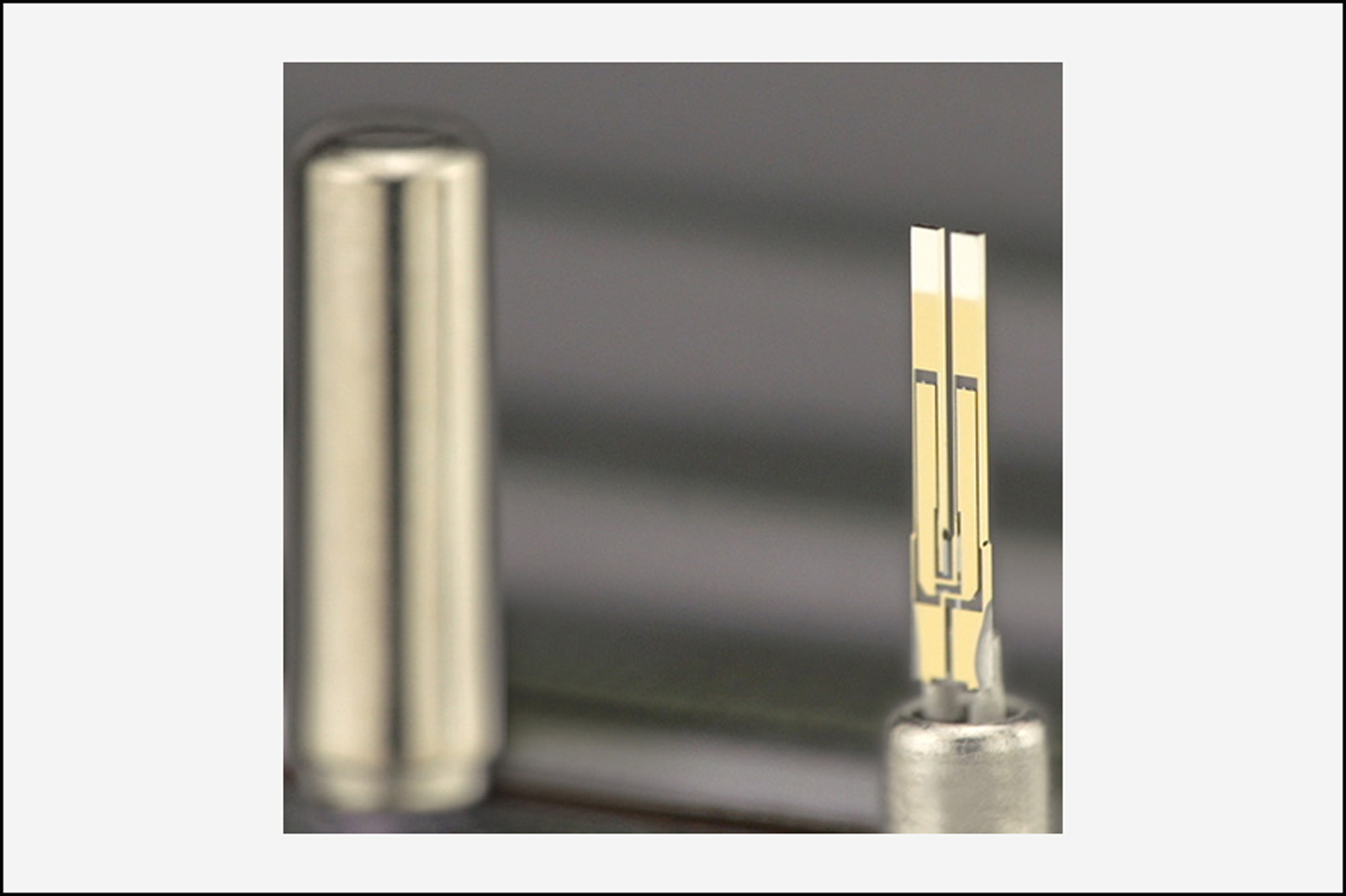
The tuning fork of a quartz Grand Seiko movement is small enough to fit into the 1 mm diameter tube in the background. Image – Grand Seiko
The first brand to utilise a 32,768 Hz quartz crystal was Girard Perregaux in 1971, when it debuted the GP 350 movement. The mathematically-inclined will realise that 32,768 is two raised to the 15th power. In terms of computing, powers of 2 are preferred because they are the easiest to implement in binary terms.
The execution would look like this: the quartz crystal outputs a sinusoidal wave at 32,768 Hz, and it is first converted to a square wave or pulse. The first bit of the counting circuit registers every falling voltage (“negative edge-triggered”) and flips itself (from “0” to “1”, or vice versa). Notice that the output of this first bit is also a square wave, and this is fed to the second bit. At every negative edge, the second bit is flipped.
This chain of “flip-flop” circuit, 15 bits long, will reach 1 Hz at the 15th bit. The electronic circuit then tells the second hand to advance one second according to that information. The smallest power of two that is greater than 20,000 Hz, the limit of human hearing, is 32,768 Hz, which explains why there is no audible noise generated by the vibrations within a quartz movement.
To keep the vibrations of the quartz crystal going, remember that every oscillation of the quartz crystal generates a voltage to the circuit. This voltage is then used in the circuit that oscillates at 32,768 Hz, amplifying the voltage, and then sending it back to the quartz crystal, providing the energy for long-term oscillation. The process is analogous to the the setup of a mechanical movement with a mainspring barrel that keeps the balance wheel going.
High-accuracy quartz
While the basic principles of all quartz movements are the same, not all quartz movements are made the same. Just as mechanical movements use hairsprings of different grades, quartz movements utilise varied types of quartz crystals.
And that brings us back to the magic number 32,768 – the rapid oscillation of a quartz crystal lies behind the superior accuracy of quartz compared to a conventional mechanical movement.
Just as it is with high-beat mechanical movements, increasing the frequency of quartz oscillation by using higher powers of two can boost accuracy. An example is the 262,144 Hz Precisionist movement made by Bulova, now a subsidiary of Citizen. It runs eight times faster than a conventional quartz movement.
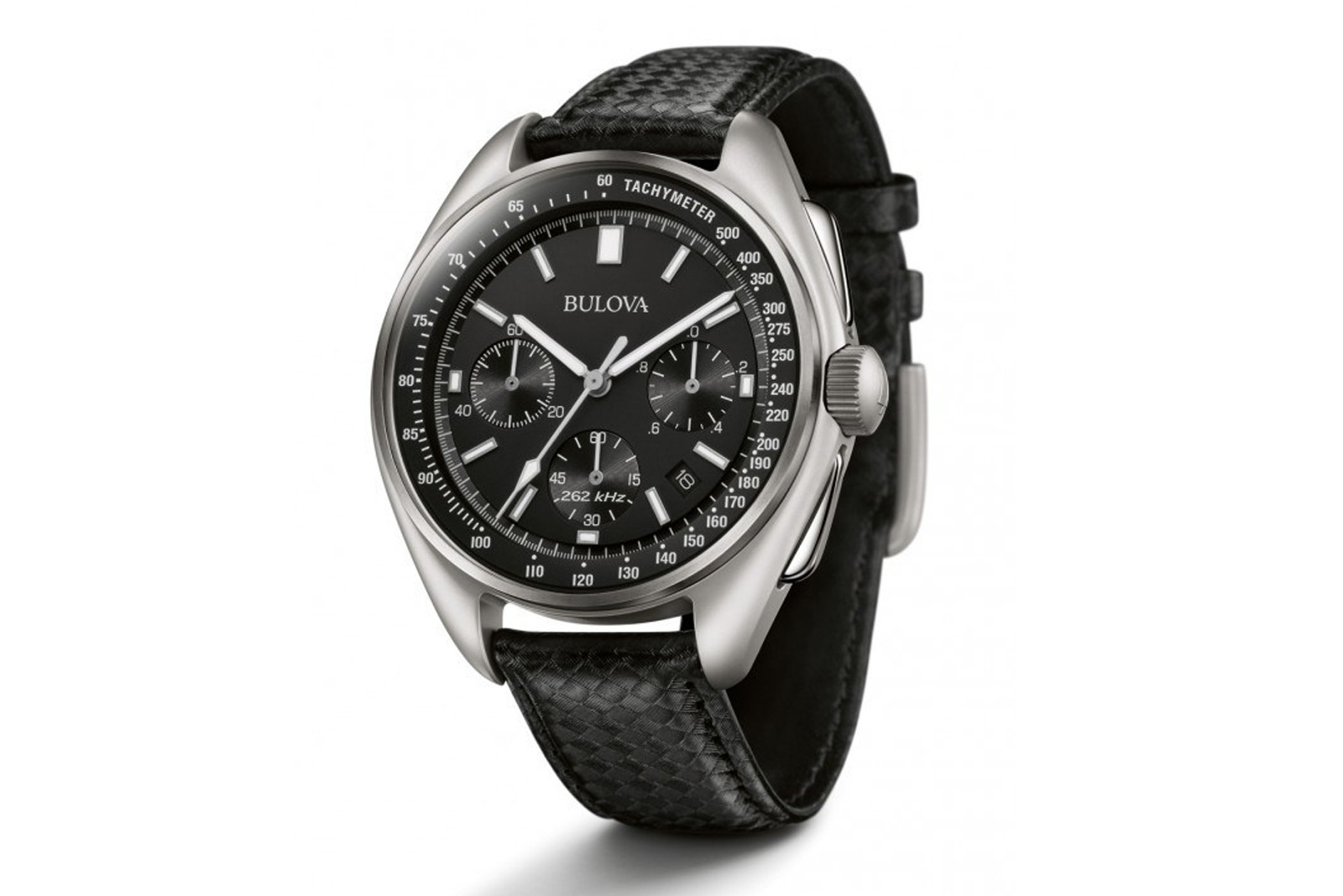
The Bulova Lunar Pilot Chronograph with a 262 kHz Precisionist quartz movement
A higher frequency makes for a more accurate calibration because for the same amount of elapsed time, the integrated circuit is able to “count” more oscillations when the movement runs at a high frequency, and then tune the crystal accordingly to achieve a higher accuracy.
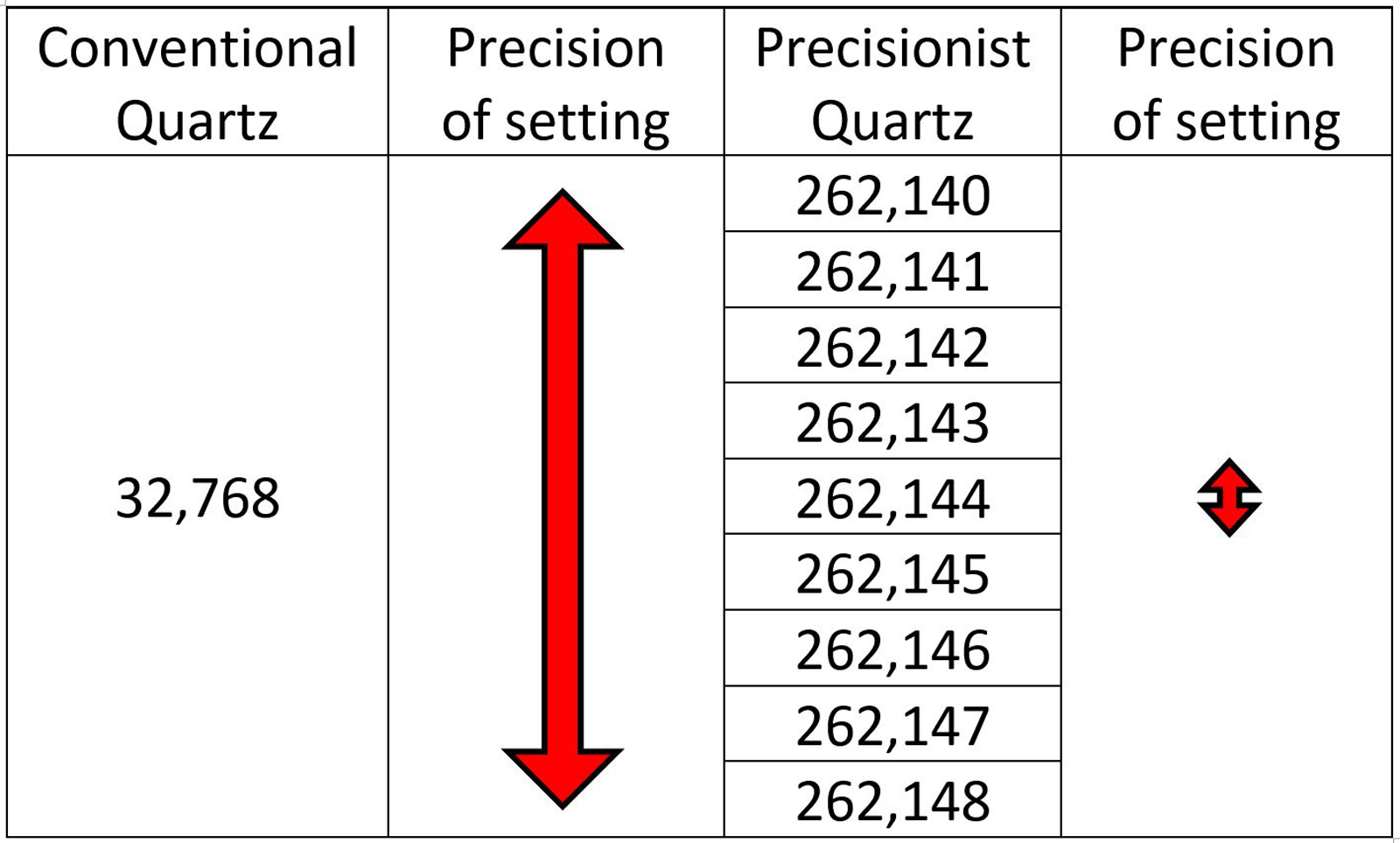
Increased precision due to a higher frequency
In real world usage, the Precisionist is almost eight times more accurate than a conventional quartz movement, which means a deviation of a few seconds a month. To achieve yet another magnitude of accuracy – a few seconds a year – other factors come into play. We will return to frequency at the end of this section.
Despite the vast gulf between the two, a quartz crystal’s natural frequency is affected by temperature, just as it is with a traditional balance wheel. While mechanical movements use Invar-class alloys for balance wheels and Elinvar-class alloys for hairsprings in order to deal with the effects of temperature fluctuations, the quartz crystal cannot be swapped out for another material for better behaviour at a range of temperatures. Instead the solution is thermocompensation.
Thermocompensation works as follows: after tuning a quartz crystal to the chosen frequency, its natural frequency is then determined at several temperature points. The movement samples ambient temperature alongside the quartz crystal, and uses a reference table (“Look Up Table”) to translate the new frequency to timekeeping. In the Grand Seiko 9F quartz movements and the new 9RA2/9RA5 Spring Drive movements, the temperature is sampled 540 times a day at fixed intervals.
Also, thermocompensation makes it necessary to have the full resolution frequency of 32,768 Hz, instead of the binary counting described above. This method is informally known as the digital-count method.
However, this is not the only method for thermocompensation. As it turns out, the frequency of the crystal can be tuned by applying a slightly different voltage. This class of quartz timing circuit is known as voltage-controlled crystal oscillator (VCXO). And when the input for the voltage control is the instantaneous quartz temperature, the system is known as temperature-compensated VCXO, or TCVCXO for short. The Rolex Oysterquartz movements of the 1970s used such a system, and it is not known if TCVCXO has been implemented in wristwatch movements since then.
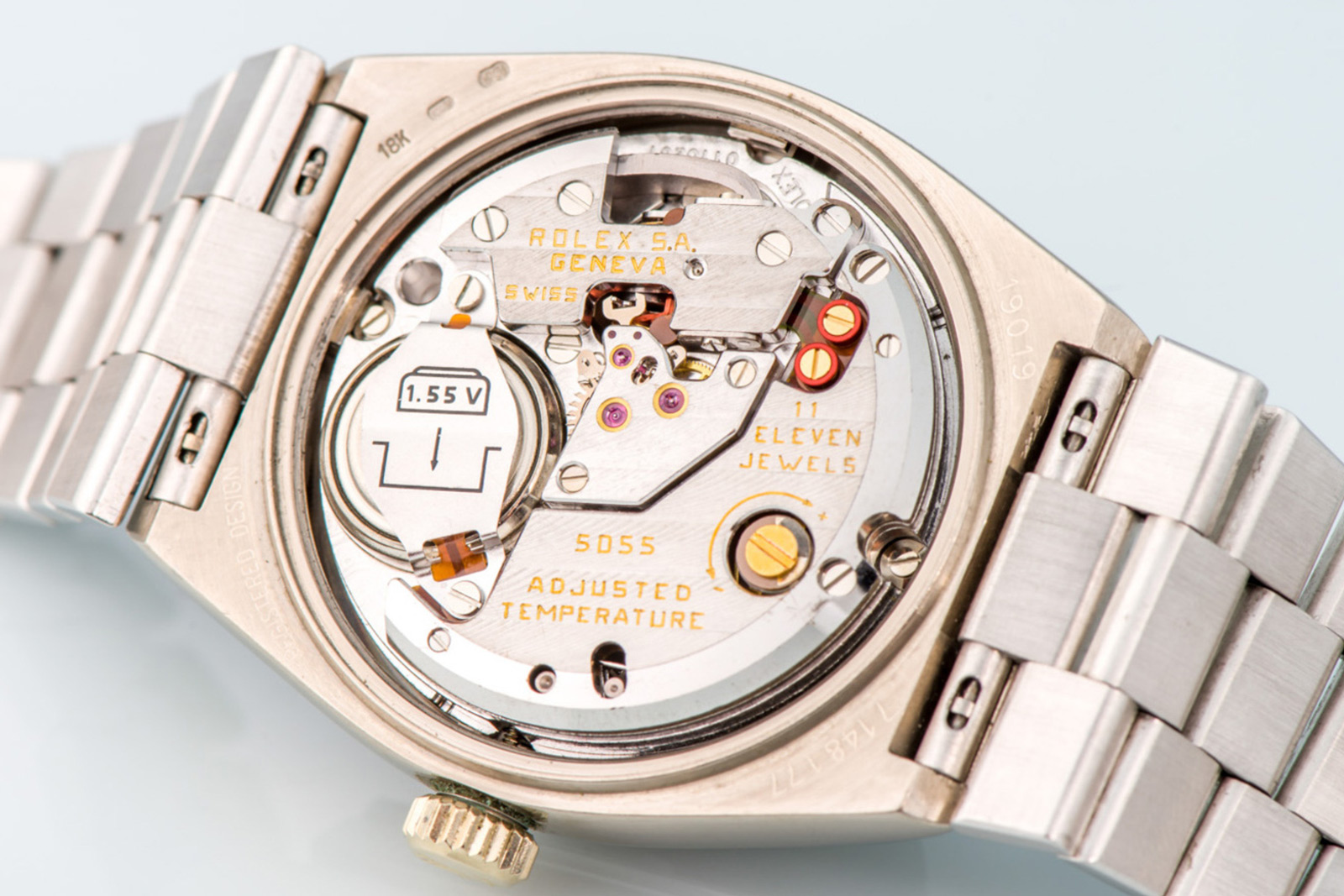
The cal. 5055 in the Rolex Oysterquartz Day-Date ref. 19000/19019. Image – Antiquorum
Quartz crystals used in watch movements have temperature sensitivity of about 0.035 ppm/°C2. Assuming the crystal is tuned to exactly 32,768 Hz at 25°C, operating temperature cannot deviate beyond a few degrees Celsius in order to keep time to within a few seconds a year.
Thermocompensation is therefore essential to reach the required accuracy in daily use, when sharp differences in temperature can happen when exiting an air-conditioned building and going into the sun for instance.
In contrast, the oven-controlled crystal oscillator (OCXO) that is used for highly accurate scientific instruments relies on maintaining a constant temperature. However, OCXO is not suitable for low SWaP (size, weight and power) applications, such as wristwatches that are usually powered by a lithium battery smaller than a coin. OCXO, on the other hand, are found inside master clocks, which are stationary, desktop devices that provide reference time to other electronic devices.
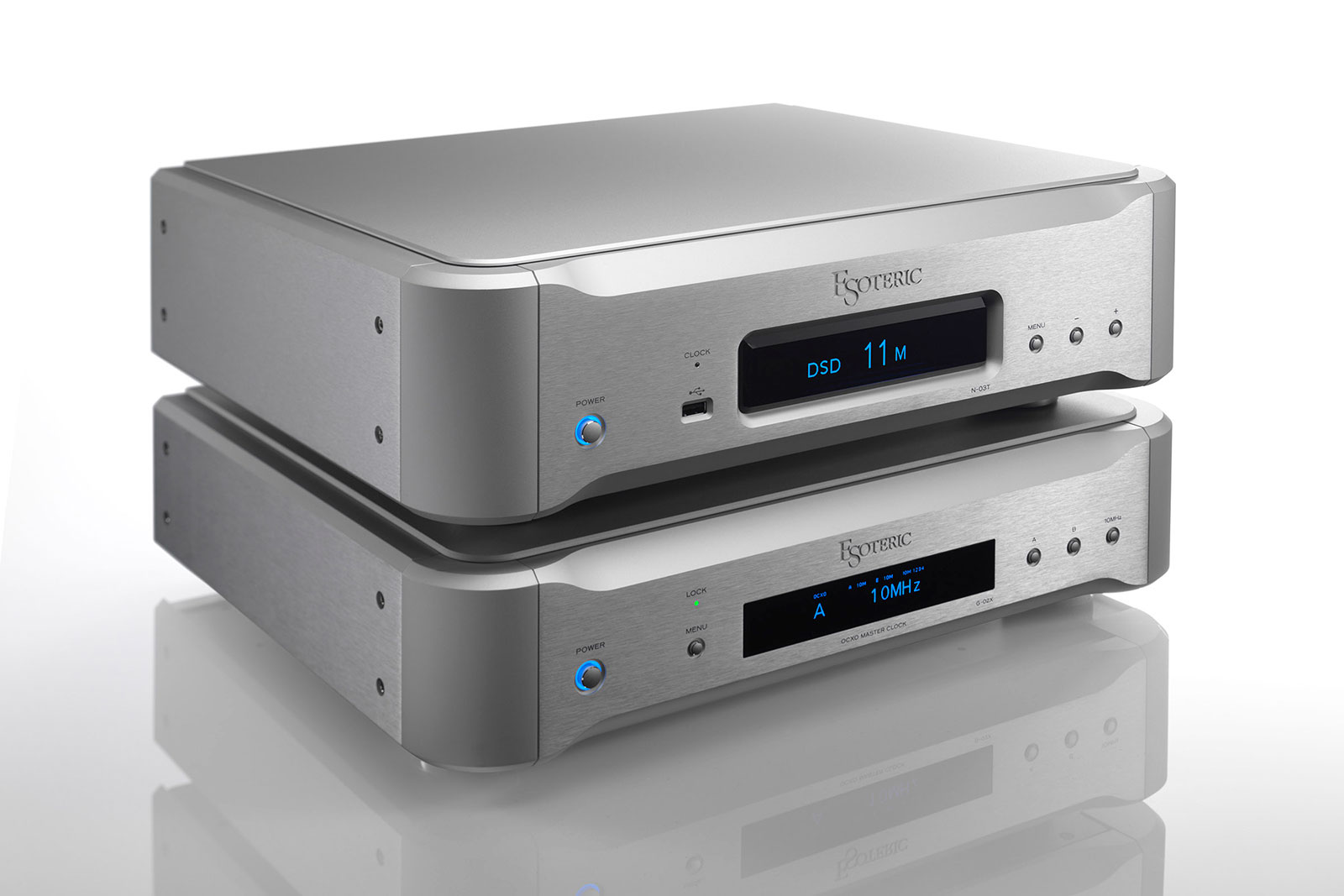
The G-02X OCXO master clock (above) made by Esoteric of Japan for high-end audio systems. Image – Esoteric
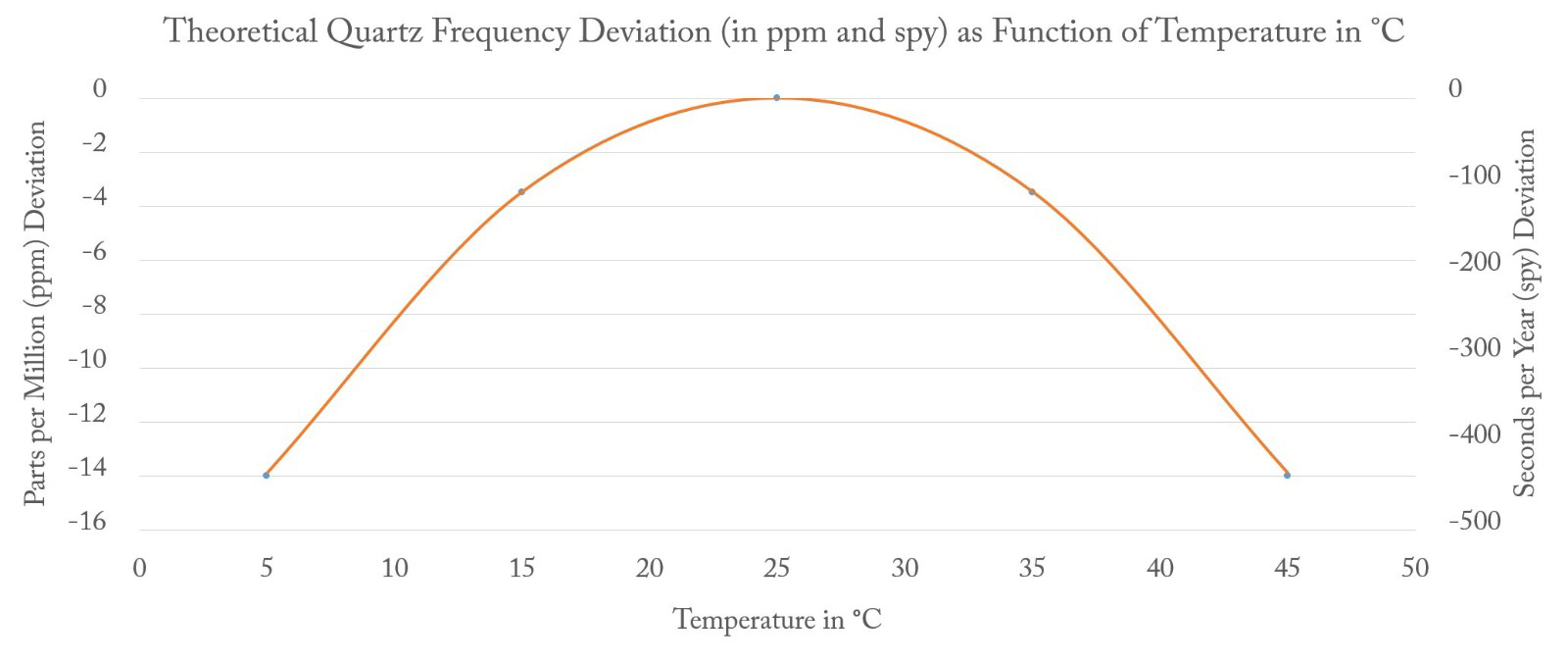
The relationship between frequency and temperature is approximately quadratic around this selected temperature range
As mentioned above, since quartz movements are restricted to quartz crystal as the sole material for the oscillator, better behaviour at a range of temperatures is impossible. That said, while the material cannot be changed, its behaviour can be influenced by another factor: quartz orientation.
Quartz is an anisotropic material, meaning that its physical properties are dependent on the direction the property is measured. Another example of an anisotropic material is wood – wood fractures more easily along the grain than perpendicular to the grain.
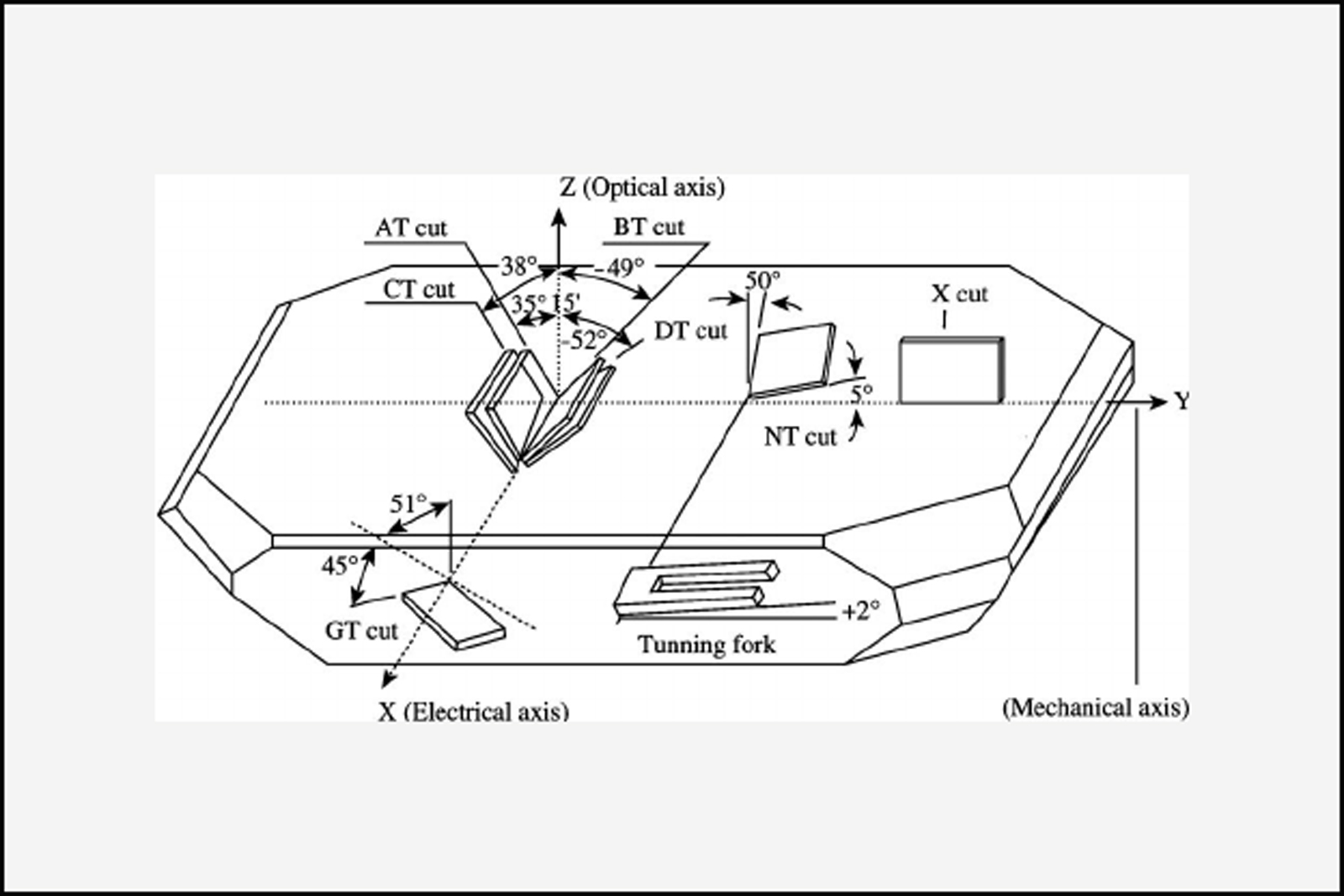
Quartz crystal axes. Source – ‘Three-electrode self-actuating self-sensing quartz cantilever: Design, analysis, and experimental verification’, Vol. 81, The Review of Scientific Instruments, June 2010
The temperature sensitivity diagram above is typical for a tuning fork quartz crystal, but for a small block of quartz cut in a specific direction – AT cut and 35° theta rotation – the result is a much flatter curve around the same temperature range. This means less reliance on thermocompensation for better timekeeping, or a movement can be made more accurate in the window before thermocompensation kicks in.
There is another benefit with moving into AT-cut quartz crystals: the frequency of oscillation is much higher, measured in the MHz (megahertz, or millions of Hertz). In theory, this can achieve reach sub-second accuracy per year. The Citizen Caliber 0100, for instance, promises accuracy of within one second per year.
Running a quartz movement at ultra-high frequencies, however, increases computational complexity and energy consumption. The solution adopted by Citizen is its Eco-Drive solar-power technology that charges the power cell regularly via solar panels on the dial.
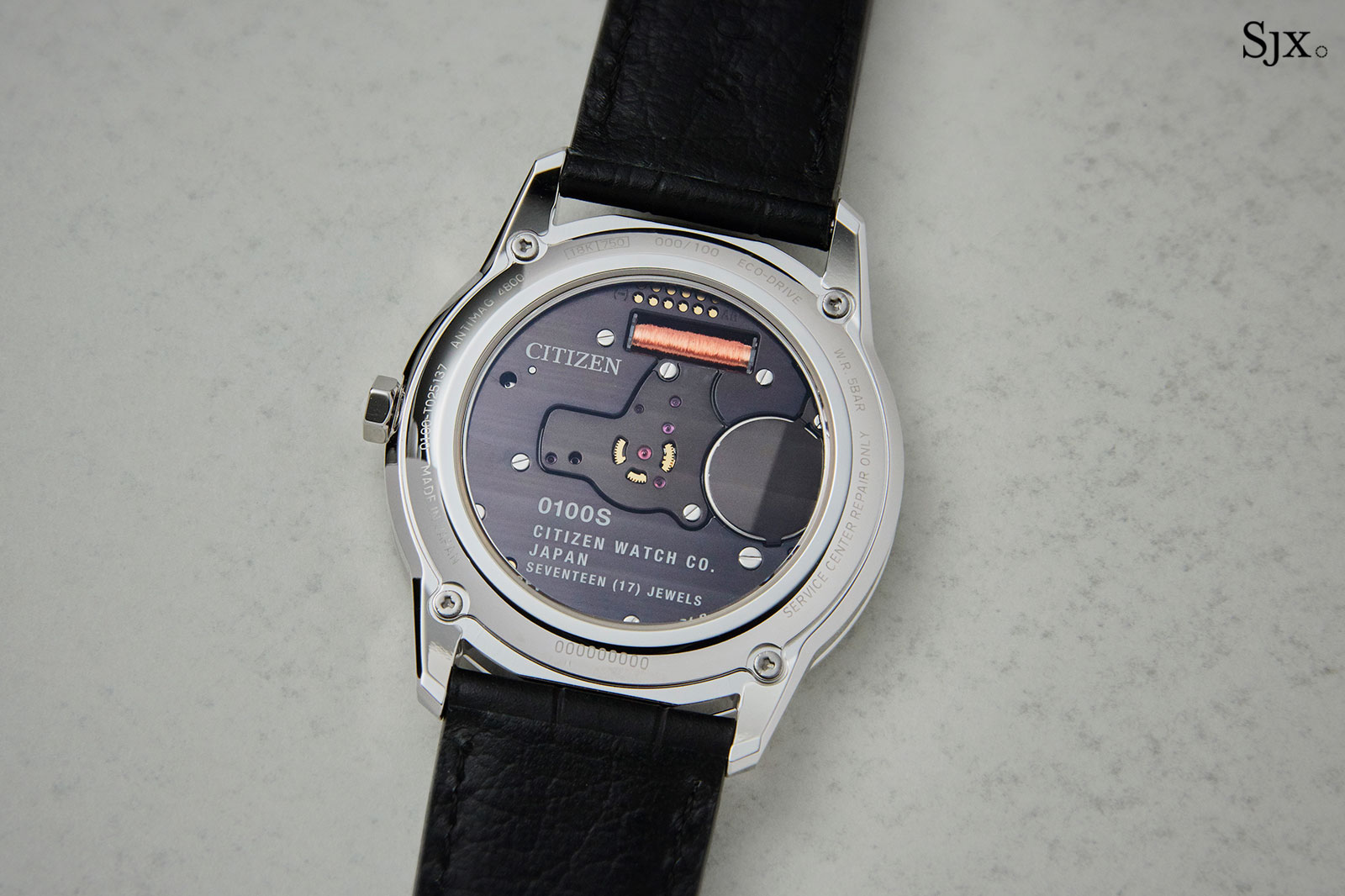
The world’s most accurate quartz wristwatch, the Citizen Caliber 0100
However, while quartz crystals are very effective at maintaining a stable frequency (they possess a high quality factor), they may not maintain the exact frequency over prolonged periods, namely months or years. The term for this is quartz drifting or ageing. It has been established that frequency drift is most significant over the first few months of operation, and the drift decays logarithmically.
This is relevant for high accuracy quartz movements because the natural frequency of the crystal drifts over time due to a few factors. The purity of the crystal as well as outgassing from the crystal packaging can form surface contaminants that affect the mass of the crystal and hence frequency stability. Mechanical stress from the mounting of the quartz crystal also affect the long-term stability of the frequency.
These potential pitfalls can be mitigated during production by assembling the movements in a high-precision cleanroom environment, hermitic sealing of the crystal packaging, and calibration of the quartz crystal after a period of ageing. Both the Citizen Caliber 0100 and Grand Seiko 9F movements thus rely on quartz crystals aged for at least three months as well as sealed crystal capsules to counter these effects.
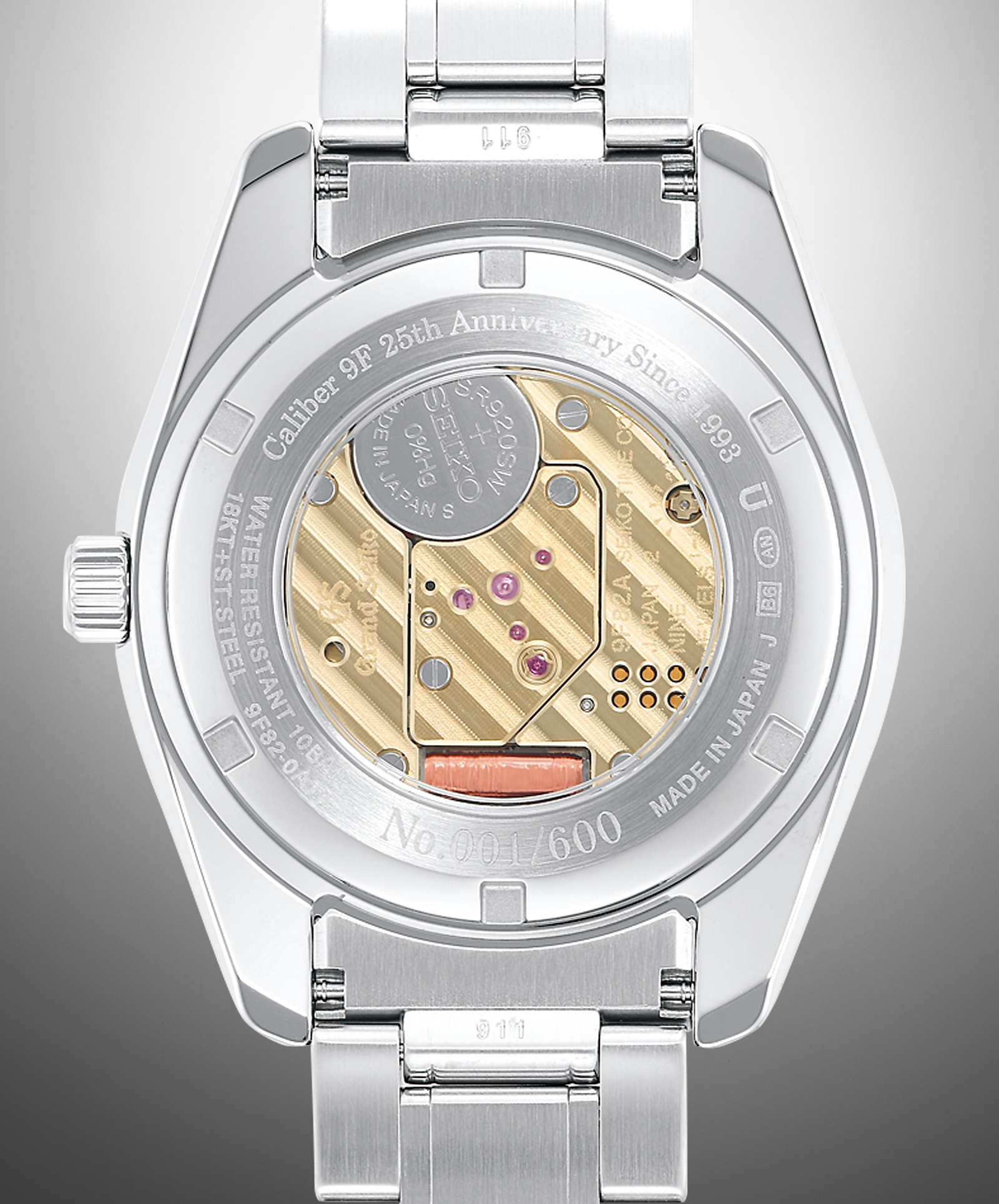
The anniversary edition of the Grand Seiko 9F quartz with the movement revealed through an open back. Image – Grand Seiko
Extending the Power Reserve
Increasing accuracy, however, comes at a cost of increased energy consumption. As noted above, the Citizen Caliber 0100 uses solar power to charge the movement, but there are other methods to increase the autonomy of the watch.
One of the best known is Seiko’s Kinetic self-winding quartz movements that are recharged with a rotor, similar to an automatic mechanical watch (though the Kinetic calibres are not high-accuracy quartz).
And then there is the unexpected – the Geneva independent watchmaker F.P. Journe. Its Élégante wristwatch with the quartz cal. 1210 goes to sleep after about 35 minutes of inactivity. A mini-rotor, essentially a free-spinning half-circular disc, functions as a mechanical motion detector.
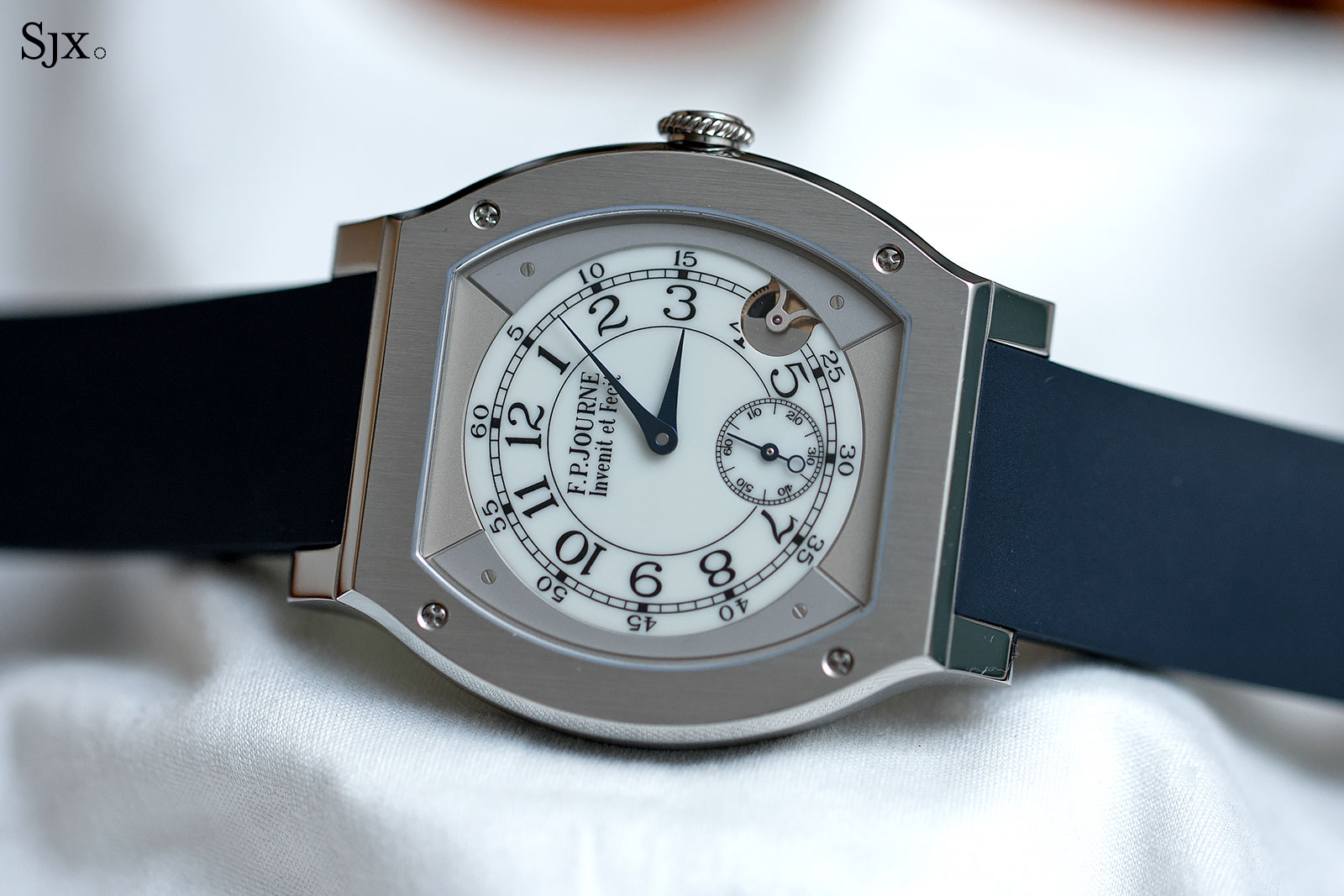
The F.P. Journe Élégante 48
When the watch is moved, the rotor spins and generates a current. This current wakes up the movement, which then propels the stationary hands to show the correct time. F.P. Journe claims that this power-saving feature enables the watch to go without a battery replacement for up to 18 years, compared to the typical three to five year interval for conventional quartz watches.
In fact, if luxury is all about ease and convenience for the owner, then the Élégante is probably at the top of the game. The drawback is, of course, is that fact that the Élégante is not a high-accuracy quartz, so it only keeps time to an average accuracy.
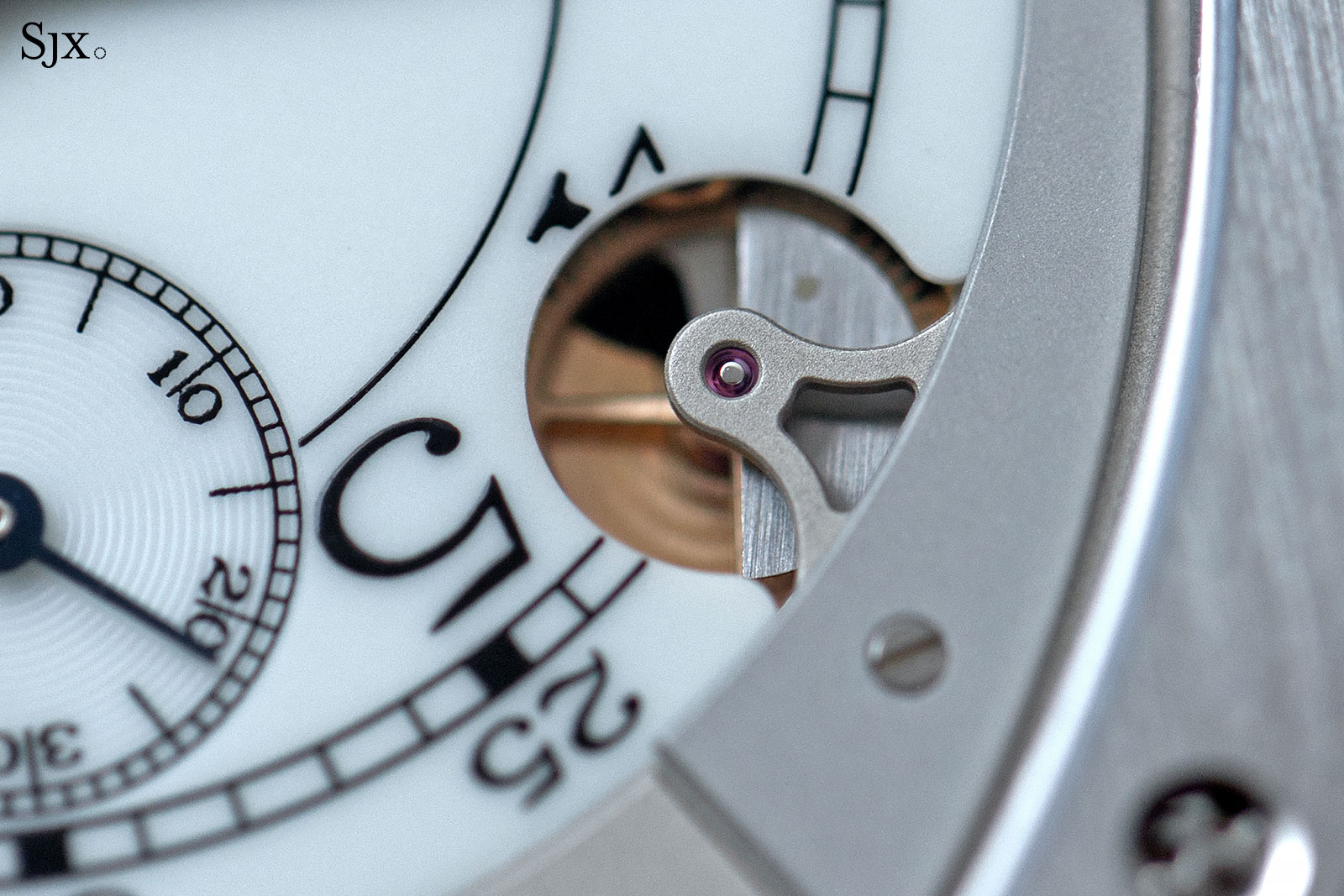
The motion-sensing mini-rotor in the F.P. Journe Élégante, located near 4 o’clock
Can quartz have its day in the sun?
Beyond the allure of a brand, the draw of luxury timepieces is usually laborious finishing and assembly – all done by hand. We note that both are not exclusive to mechanical movements, the quartz-regulated but hand-wind Grand Seiko 9R02 Spring Drive movement boasts world-class finishing. Its full, rounded anglage that incorporates sharp, inward angles – exemplified by the corner between the two jewels below – are characteristic of high-end, traditional hand finishing.

The hand finished Grand Seiko 9R02
At a slightly more affordable level, the cal. 1210 of the Élégante is decorated as fully as a quartz movement can be. Its 18k red gold plate is finished with Côtes de Genève, giving it an aesthetic that is similar to most mechanical F.P. Journe movements.
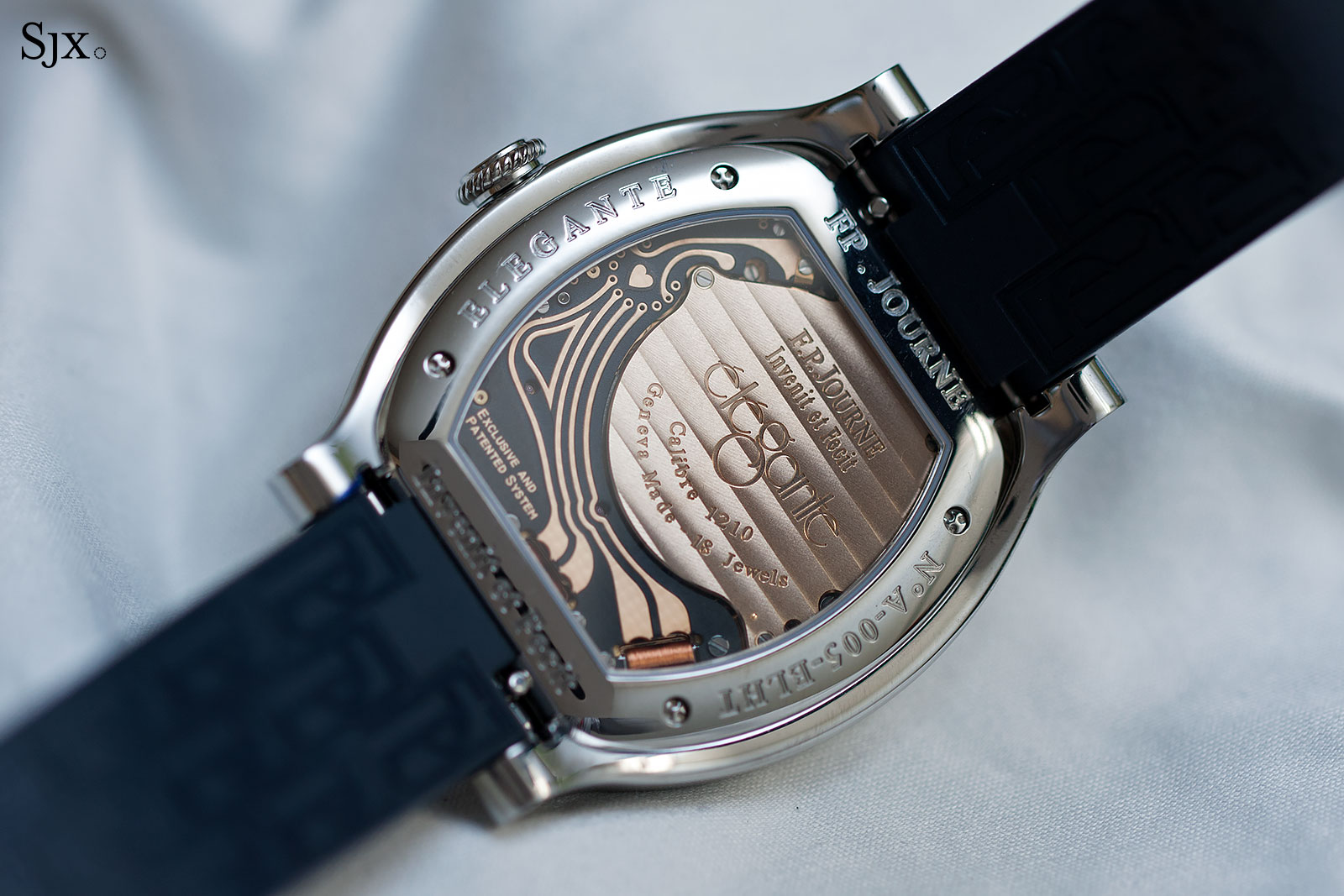
The cal. 1210 of the Élégante with its 18k red gold plates, with even the electrical traces made of red gold
In short, just because the vast majority of quartz timepieces are made without human involvement does not preclude the existence of finely-made, well-considered quartz watches.
But that leaves the perennial reason to object to all things quartz: the electronic circuits cannot last forever and luxury should be forever.
With proper storage, high-quality electronic circuits can last a very long time, with a lifespan measured in decades. In fact, satellites and spacecraft constructed in the 1970s are still transmitting valuable scientific data from deep space back to Earth, despite the harsh radiation beyond our Solar System. And these space voyagers are naturally equipped with electronic clocks, albeit primitive timekeepers compared to those of today. Yet there they are, having travelled far beyond human imagination and still oscillating away.
Granted, it is often more cost-effective to simply replace a quartz movement instead of repairing it, explaining the perception that quartz watches are disposable. But that is a matter of economics and not an intrinsic fault of electronic circuits.
This reminds me of the philosophical paradox known as the Ship of Theseus: would the ship be exactly the same ship if it were entirely replaced piece by piece?
While there are no quick answers in the philosophy of identity, we have grown to accept H. Moser’s philosophy of replacing the entire balance assembly, or the “heart” of the movement, during a servicing thanks to its proprietary modular construction. Indeed, I am hard-pressed to think of a legitimate reason that quality quartz watches are inherently inferior to their mechanical counterparts.
Concluding thoughts
“Nearly everything is really interesting if you go into it deeply enough” – a good philosophy to live by, especially since it was good enough for Richard Feynman, the legendary, Nobel Prize-winning physicist. I wrote this article to prove to myself that quartz technology can be interesting beyond its most obvious point of appeal – good timekeeping affordable enough for anyone.
Quartz timekeepers are more accurate and requires less maintenance than mechanical watches. They are practically fuss free regardless of what the wearer is doing. From that standpoint – and our preconceptions aside – quartz is unequivocally better. If luxury hinges on time and effort invested, then the convenient quartz watch can stand shoulder to shoulder with the best mechanical wristwatches.
The author is a scientist working in the public sector. He graduated from Caltech with a Bachelor of Science in physics and history and philosophy of science.

